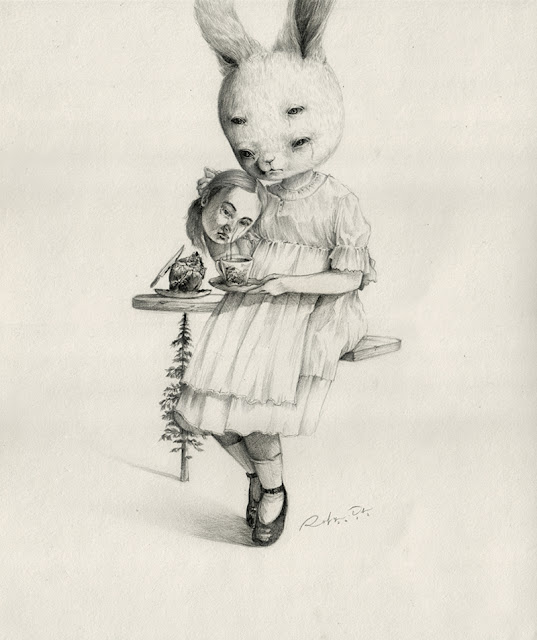As Stage 3 develops, so do my interests in aiming to making pieces of work which relate to being 'creepy' as a theme. From this, I am investigating what really makes something eery, and what conventions are used to making something have a certain 'shock' factor about it.
Investigating the most common fears found in people, the most popular fear found is
Arachnophobia: the fear of spiders. This phobia tends to effect women more than men, and this fear includes feeling uneasy when faced with a space where spiders may be situated or seeing webs. Bad cases of arachnophobia include panic attacks or having trouble breathing when faced with their fear.
Typical spiders have traits such as long legs and fine hairs, and this idea of long, 'creeping' limbs is what has influenced my own work when developing my style when drawing the human body, where I have developed methods of exaggerating the length of limbs and the number of joints in the arms and legs of the body.
Things that are often associated with being creepy are concepts where the content is slightly different from the normal standard, such as characters behaving passively and odd. The idea of having 2-D emotions where characters are restricted of the variety of emotions that humans display gives things a certain vagueness, which relates to mystery - a factor commonly associated with techniques of horror or creepy-ness. (The use of the 'fear of the unknown' technique commonly found in pop culture).
Creepy is an ambiguous term that more often than not needs to be defined individually, but when researching different ways and things different people find creepy, more commonly than not the idea of distorting reality by a small fraction turns something from being an average piece of work to being eery and unsettling. 'Creepy' can be developed into several different ways, one where the source of fear is unknown, hidden, and leaves the audience psychologically chilled, and the other technique of gore and shock which creates a 'straight-up' creep vibe. Creepy things suggest connotations of characters with 'no escape' and dark topics that are unsettling to read. Using things such as taboo topics in work to making something shocking and unsettling.
 |
| Short stories manipulating the idea of the unknown |
Other concepts that are considered creepy include vivdly showing something that effects the human body directly, and this idea of relating to the audience is what makes something creepy and unsettling to view.
Uncanny Valley is the hypothesis that suggests that when human features look and move almost, but not exactly, like natural human beings, it causes a response of unease or revulsion amongst some human observers. Examples of this can be found in fields of 3D computer animation, robotics and burn reconstruction. The 'valley' refers to the dip in a graphic of the comfort level of humans as subjects move towards a healthy human-like appearance.
The uncanny valley is the region of negative emotional response towards robots that seem 'almost human'. Movement in such objects amplifies the emotional response.
(source)
The term was coined by Masahiro Mori in 1970, who predicted that as the appearance of a robot becomes more human, the observers emotional response will become increasingly positive until the likeness reaches a point where slight imperfections are emphasised and the emotional response becomes overwhelmingly negative. When human likeness becomes 100% accurate the emotional response curves upwards to more positive responses.
(source)
















